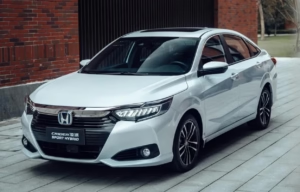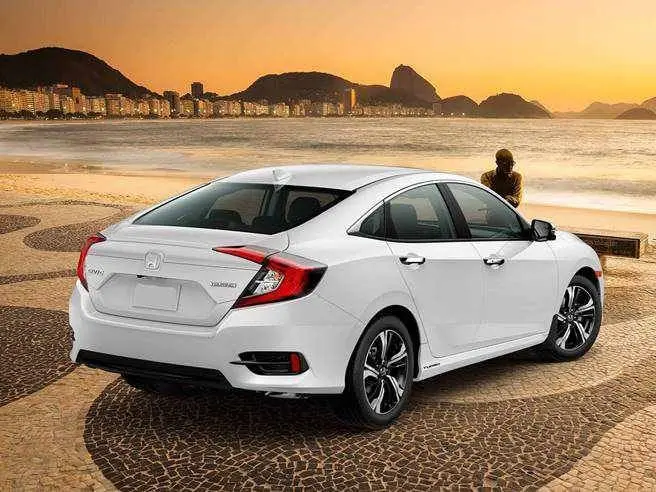The future of electric cars is a topic that has become central in discussions about sustainability, climate change, and the evolution of technology. As governments, automakers, and consumers search for eco-friendly solutions, electric vehicles (EVs) have emerged as the next big thing in the automotive industry. But what exactly makes EVs so popular, and what challenges stand in their way? In this blog, we’ll explore their advantages, disadvantages, future potential, and key things you should know before buying one.
What Are Electric Cars?
Electric cars are vehicles powered by electric motors instead of traditional combustion engines. They rely on rechargeable batteries to store and deliver energy. While the concept is not new—EVs were first introduced over a century ago—advancements in battery technology and the global push for sustainability have made them more relevant today.
Types of Electric Cars
- Hybrid Electric Vehicles (HEVs): Combine a small petrol engine with an electric motor.
- Plug-in Hybrid Electric Vehicles (PHEVs): Can be charged and run short distances on electricity alone.
- Battery Electric Vehicles (BEVs): Fully electric, powered only by batteries with no fuel engine.
Advantages of Electric Cars
Environment-Friendly
One of the biggest advantages of EVs is their environmental benefit. With zero tailpipe emissions, EVs significantly reduce air pollution and greenhouse gas emissions, making them a sustainable choice for cities struggling with pollution.
Lower Running and Maintenance Costs
Electricity is cheaper than fuel, and EVs have fewer moving parts compared to combustion engines. This reduces the chances of breakdowns and lowers long-term maintenance costs.
Government Incentives
Many governments worldwide are offering tax credits, rebates, and incentives to encourage the purchase of electric cars. This helps offset the initial cost and makes EVs more attractive to buyers.
Advanced Technology
EVs often come equipped with the latest technology: regenerative braking, advanced infotainment systems, autopilot features, and smart navigation that locates nearby charging stations.
Disadvantages of Electric Cars
High Upfront Costs
Despite incentives, EVs are usually more expensive to buy than fuel-powered vehicles. Battery manufacturing is costly, and this raises the overall price of the car.
Limited Charging Infrastructure
In many countries, charging stations are still not as common as fuel stations. This makes long-distance travel challenging for EV owners.
Battery Concerns
Batteries degrade over time and can be expensive to replace. Their performance also drops in extreme weather conditions, affecting range and efficiency in future of electric cars.
Charging Time
Unlike fueling a petrol car in 5 minutes, charging an EV can take anywhere from 30 minutes (fast chargers) to several hours (home chargers). This can be inconvenient for people with busy schedules.
The Future of Electric Cars in 2025 and Beyond
Despite challenges, the future of electric cars looks bright. Experts predict that EVs will dominate global markets within the next decade. Automakers are investing billions in research to improve range, reduce charging times, and make EVs more affordable.
Market Growth
Global EV sales are increasing rapidly. In countries like China, the US, and parts of Europe, electric vehicles are becoming mainstream.
Renewable Energy Integration
As renewable energy sources like solar and wind grow, charging EVs with green electricity will make them even more sustainable.
Affordability
With mass production and improved battery technology, costs are expected to decline, making EVs accessible to more people.
Should You Buy an Electric Car?
Buying an EV is not just about owning a car—it’s about making a lifestyle choice. If you live in an area with good charging infrastructure and are looking for a long-term eco-friendly investment, an electric car may be perfect for you. However, if you frequently travel long distances or live in a region where charging stations are limited, it might be worth waiting a few more years until the infrastructure improves.

Overcoming the Critical Challenges
Despite strong political will, the widespread adoption of Electric Vehicle technology in Pakistan faces three major, interlinked hurdles:
A. The Charging Infrastructure Deficit (Range Anxiety)
The most immediate and significant barrier is the limited network of charging infrastructure. Currently, charging stations are largely concentrated in major urban centres (Karachi, Lahore, Islamabad).
- The Government Response: The NEVP addresses this by mandating a significant expansion, including setting up at least one DC fast-charging station every 15-30 kilometres on all motorways and a specified coverage area in major cities. Furthermore, new regulations (2024) have dramatically lowered the power tariff for charging stations, encouraging private sector investment in this crucial sector.
- Innovation: Initiatives like the “Battery Swapping Network” for electric three-wheelers are emerging, demonstrating innovative, localised solutions to overcome range anxiety, particularly in the mass-market public transportation sector.
B. High Upfront Cost and Affordability
Future of Electric cars, particularly the newer, feature-rich imported models from companies like BYD, MG, and Audi, have a high initial purchase price, placing them out of reach for the average Pakistani consumer. This high cost is primarily due to the expensive imported battery component.
- The Solution: The key to true mass adoption lies in localisation—the domestic assembly and eventual manufacturing of EV components, especially the battery. Incentives are designed to foster this transition, which is expected to bring the price of a local Electric Vehicle closer to that of an equivalent ICE car over the next few years.
C. Grid Stability and Power Management
While Pakistan currently has a surplus electricity generation capacity, the grid needs significant modernization to handle the additional, concentrated load from EV charging infrastructure. The integration of EVs with the existing grid, especially as private solar installations grow, requires smart grid technology and robust distribution systems to prevent outages and voltage fluctuations.
3. The Opportunities and Economic Windfalls
The future of electric cars in Pakistan is driven by massive economic and environmental advantages that the nation cannot afford to ignore.
Economic Strength and Foreign Exchange Savings
Pakistan’s current account deficit is perpetually strained by a massive bill for imported petroleum products.
- Import Reduction: A successful transition to EVs will drastically reduce the demand for imported oil, leading to billions of dollars in foreign exchange savings annually. This shift will fundamentally improve the country’s economic stability.
- Local Manufacturing: The arrival of major international players, particularly from China (e.g., BYD, MG, Sazgar), signals a move towards local assembly. This localisation will lead to job creation, technology transfer, and the development of ancillary industries, paving the way for Pakistan to potentially become a regional hub for EV parts and manufacturing.
Environmental and Health Benefits
The impact of shifting away from fossil fuels is perhaps the most compelling long-term benefit.
- Cleaner Air: Replacing millions of smog-producing ICE vehicles, especially the vast fleet of three-wheelers, with zero-emission electric counterparts will dramatically improve air quality in major cities like Lahore and Karachi, easing the public health burden of respiratory illnesses.
- Climate Goals: Electrification aligns future of electric cars Pakistan with its international climate commitments, reducing greenhouse gas (GHG) emissions from the transportation sector. The availability of clean, domestically produced electricity (hydro, solar, wind) makes the “well-to-wheel” emissions profile of EVs far superior to that of imported fossil fuels.
4. The Short-Term and Long-Term Trajectory
In the short term, the market will likely see continued growth in Hybrid Electric Vehicles (HEVs) as a bridge technology, offering excellent fuel efficiency without the immediate dependency on a non-existent public charging network.
However, the long-term future is unequivocally electric.
| Segment | Current Status | Future Trajectory (2030) |
| Two & Three-Wheelers | Rapidly growing adoption in e-rickshaws and bikes due to high fuel savings. | Near-complete electrification; subsidies will ensure mass-market affordability. |
| Passenger Cars (4-Wheelers) | Initial adoption confined to urban elites and imported CBU models. | Dominated by locally assembled, more affordable EVs (likely Chinese partnerships). Charging infrastructure expands into residential areas and highways. |
| Buses/Trucks (Heavy Transport) | Piloting and small-scale fleet conversion initiatives. | Rapid conversion of public and goods transportation fleets to meet climate targets and maximise economic fuel efficiency. |
The future of electric cars in Pakistan hinges on the consistent execution of government policy, sustained private-sector investment in localisation and charging networks, and, crucially, a stable, affordable electricity supply. By tackling these issues head-on, Pakistan is positioning itself to make EVs not just a green choice, but an economically sensible one for the masses.
Frequently Asked Questions (FAQ)
1. How long do electric car batteries last?
Most EV batteries last between 8 to 12 years, depending on usage and climate conditions. Manufacturers usually provide warranties covering this period.
2. Are electric cars really better for the environment?
Yes. Even though battery production has an environmental cost, the overall lifetime emissions of an EV are much lower than a traditional car.
3. Can electric cars travel long distances?
Modern EVs have ranges of 250–400 km per charge. With fast-charging stations, they can handle long trips, though planning routes is essential.
4. How much money can I save with an electric car?
Fuel and maintenance savings can add up significantly over time. Depending on your driving habits, you could save hundreds to thousands of dollars annually.
5. Do electric cars require special maintenance?
No. In fact, they require less maintenance since they don’t have oil changes, spark plugs, or exhaust systems.
Conclusion
The future of electric cars is exciting and full of potential. While there are challenges such as cost, charging infrastructure, and battery concerns, the advantages of sustainability, technology, and long-term savings cannot be ignored. With the world moving toward green energy and automakers racing to develop affordable models, EVs are set to become the vehicles of the future.
If you’re considering one, weigh the pros and cons carefully, analyze your driving needs, and explore available incentives. An electric car may not only save you money but also contribute to a cleaner, greener planet.



